deepeye.hu
Astronomical Drawings of Peter Kiss
Astronomical Drawings of Peter Kiss




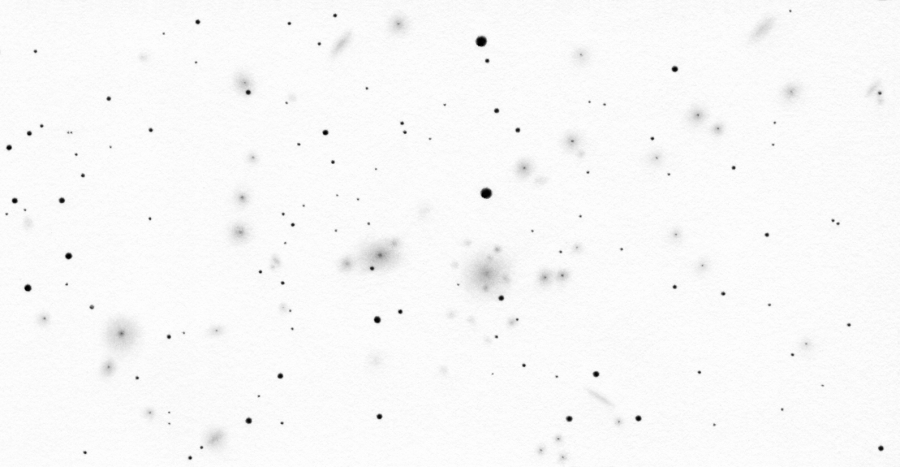
Abell 1656 a.k.a. the Coma Galaxy Cluster is a dense and rich cluster of galaxies with thousands of members in the constellation of Coma Berenices. The Coma Supercluster containing Abell 1656 lies 300 million light years away. It is the closest point of the CfA2 Great Wall. Both the visible (more degrees) and the physical size (> 20 million light years) of Abell 1656 are impressive. Its mass and density are enormous. As a comparison the size of our Local Group is about 10 million light years and it hosts only about three galaxies of considerable size (Andromeda Galaxy, our own Milky Way and M 33). There are two giant elliptical galaxies at the center of the Coma Cluster: NGC 4874 and NGC 4889. The latter is brighter with 11.5m and it harbours one of the largest black holes known with a mass of about 21 billion Suns. The majority of Abell 1656's cluster members are ellipticals and lenticulars. The spirals are more on the outskirts of the cluster and they look extremely good based on the Hubble images.
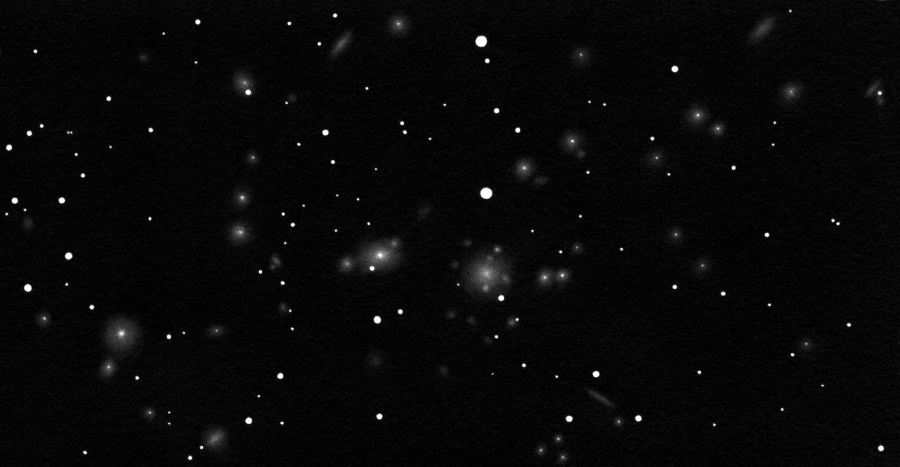
The Coma Cluster was discovered by William Herschel in 1785. It has been pretty well studied because it is close to the north galactic pole thus far from the absorbing dust clouds of the Milky Way. Also, though it is very far it is still relatively close compared to other clusters of similar size. To name only one among the numerous scientifical results, it was the Coma Cluster where a considerable amount of dark matter was detected for the first time (by Fritz Zwicky back in the 1930's).
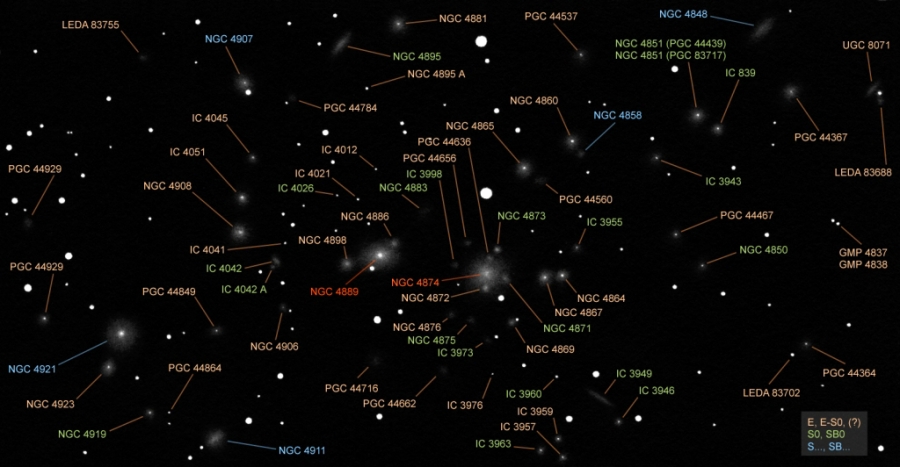
The eyepiece impression of Abell 1656 is worth a few words as well. Most of the 60-70 galaxies that are in the drawing are not that very faint (brighter than 15.0m) therefore they are really spectacularly crowding the field of view. But there isn't any real detail visible in any of the galaxies. No wonder since the visible size of the members is generally very small, about 20"-40" (arcseconds). It is interesting that there is a background galaxy in the drawing as well. NGC 4858 is about 70 million light years behind the Coma Cluster.
This is a panorama drawing that is it covers more than a field of view of the telescope. I drew 28 stars into my sketchbook from the map (Guide) before drawing by the telescope at night.
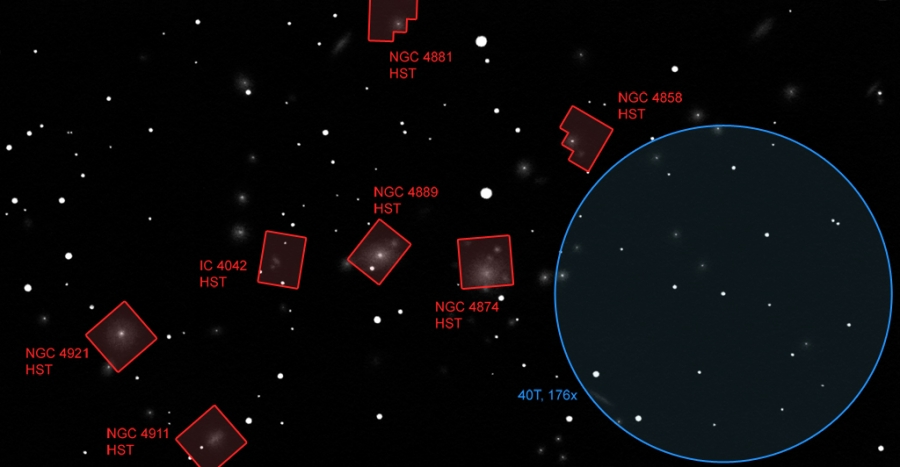
You can see the Hubble (HST, Hubble Space Telescope) images of a few selected galaxies in the Coma Cluster below. By taking a look into the telescope the fine details of these very deep images can of course not be seen. But I think these images demonstrate the beauty and the spectacularity of the Coma Cluster pretty well.
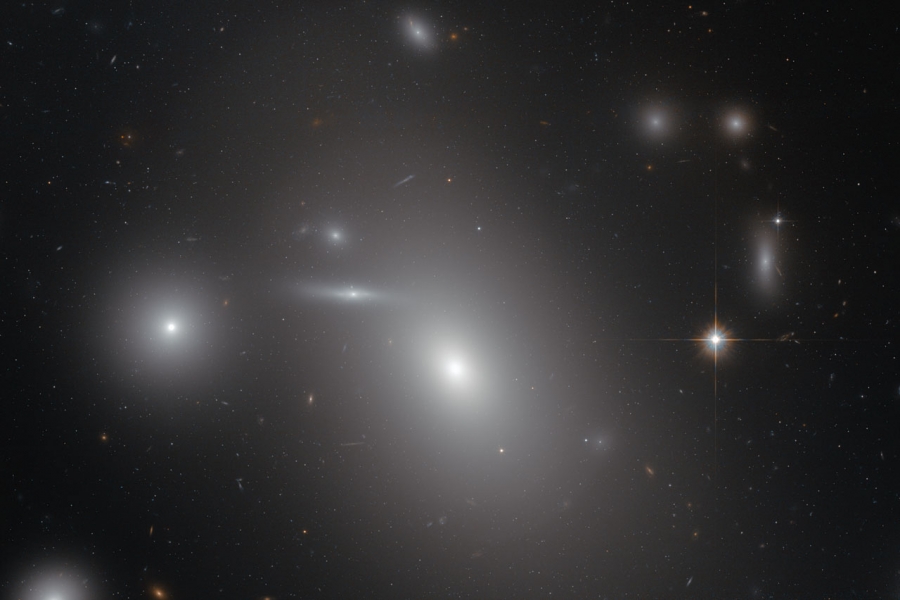
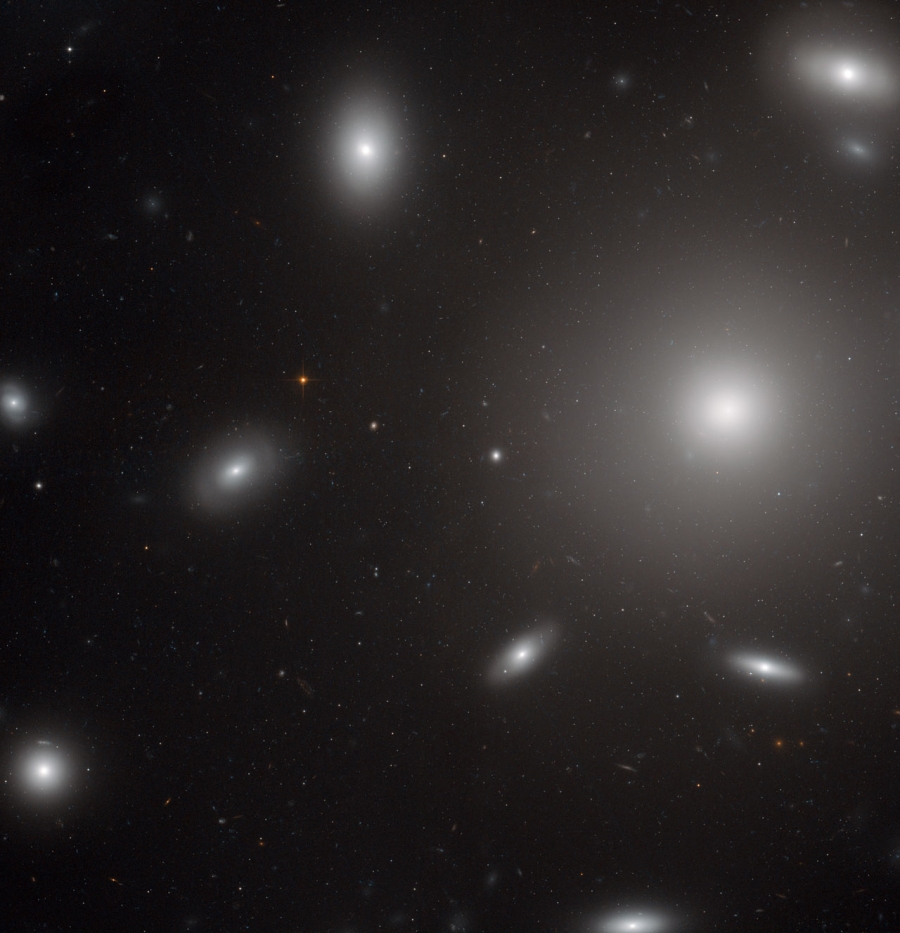
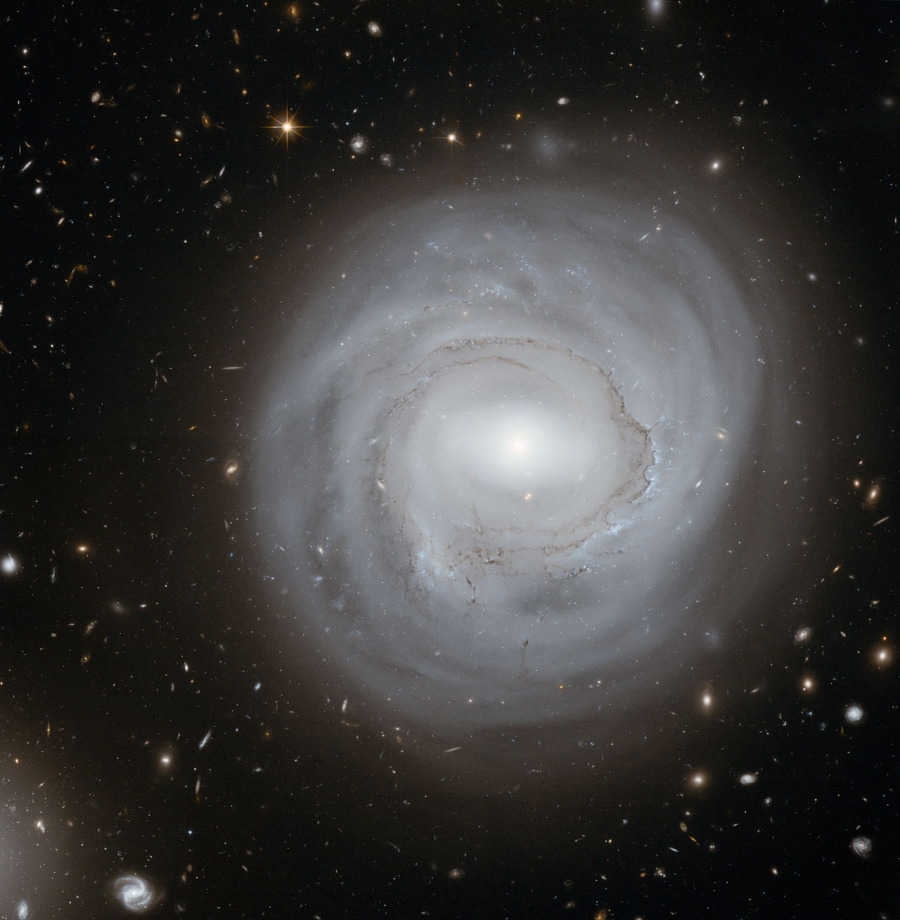

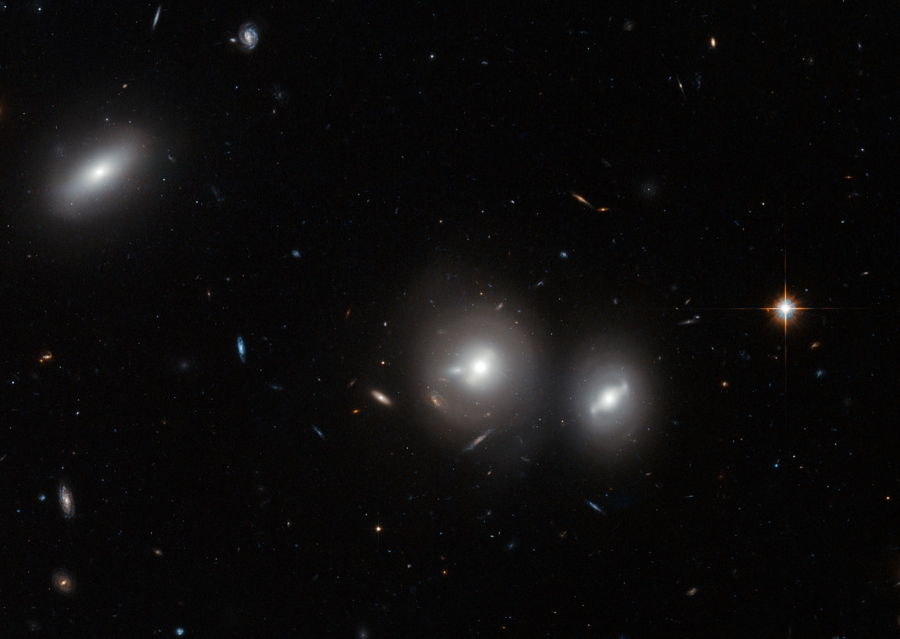
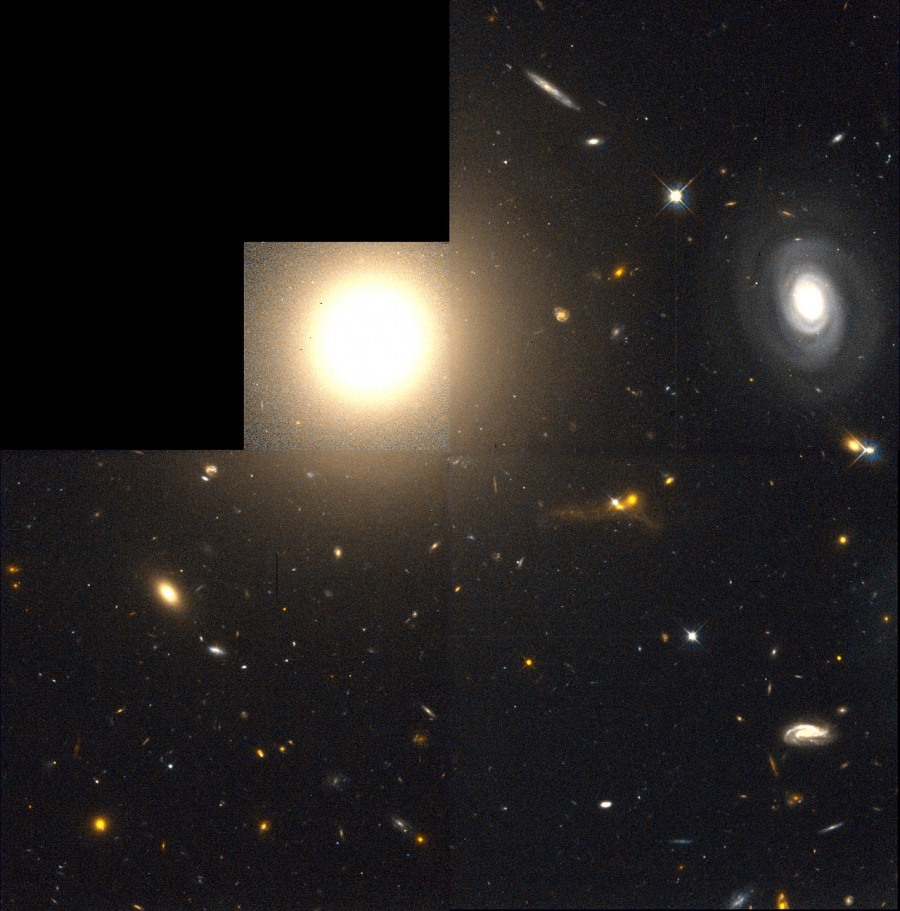

The galaxies I saw in the telescope are summarized in the table below. Brightnesses come from the Guide planetarium program. It is possible that the brightnesses were taken from different catalogs and they might even correspond to different wavelengths (B, V, etc.). Therefore the brightnesses are not to be taken as absolutely precise.
There is a short description of a few selected galaxies below the table where I write about the eyepiece impression.
| name | brightness [m] | type | note |
|---|---|---|---|
| NGC 4848 | 13.7 | SBc | |
| NGC 4850 | 14.4 | S0 | |
| NGC 4851 (PGC 44439) | 14.2 | S0 | components together |
| NGC 4851 (PGC 83717) | 15.0 | S0 | components together |
| NGC 4858 | 15.2 | SBb | |
| NGC 4860 | 13.5 | E | |
| NGC 4864 | 13.6 | E | |
| NGC 4865 | 13.6 | E | |
| NGC 4867 | 14.5 | E | |
| NGC 4869 | 13.8 | E | |
| NGC 4871 | 14.2 | S0 | |
| NGC 4872 | 14.4 | E-S0 | |
| NGC 4873 | 14.1 | S0 | |
| NGC 4874 | 11.9 | E | |
| NGC 4875 | 14.7 | S0 | |
| NGC 4876 | 14.4 | E | |
| NGC 4881 | 13.5 | E | |
| NGC 4883 | 14.4 | SB0 | |
| NGC 4886 | 13.9 | E | |
| NGC 4889 | 11.5 | E | |
| NGC 4895 | 13.2 | S0 | |
| NGC 4895 A | 14.6 | E | stellar |
| NGC 4898 | 13.6 | E | |
| NGC 4906 | 14.1 | E | |
| NGC 4907 | 13.6 | SBb | |
| NGC 4908 | 13.2 | E | |
| NGC 4911 | 12.8 | SBb-c | |
| NGC 4919 | 14.0 | S0 | |
| NGC 4921 | 12.5 | SBa-b | |
| NGC 4923 | 13.7 | E-S0 | |
| NGC 4927 | 13.8 | E-S0 | |
| IC 839 | 14.8 | S0 | |
| IC 3943 | 14.7 | S0-a | |
| IC 3946 | 14.2 | S0 | |
| IC 3949 | 14.1 | S0 | |
| IC 3955 | 14.4 | SB0 | |
| IC 3957 | 14.6 | E | |
| IC 3959 | 14.2 | E | |
| IC 3960 | 14.7 | SB0 | stellar |
| IC 3963 | 14.7 | S0 | |
| IC 3973 | 14.4 | SB0 | |
| IC 3976 | 14.7 | E | stellar |
| IC 3998 | 14.6 | SB0 | |
| IC 4012 | 15.0 | E | stellar |
| IC 4021 | 14.9 | E | stellar |
| IC 4026 | 14.6 | SB0 | stellar |
| IC 4041 | 14.4 | E | stellar |
| IC 4042 | 14.3 | SB0 | |
| IC 4042 A | 15.0 | S0 | |
| IC 4045 | 13.9 | E | |
| IC 4051 | 13.6 | E | |
| UGC 8071 | 15.3 | S? | |
| PGC 44364 | 15.7 | (?) | |
| PGC 44367 | 15.8 | (?) | |
| PGC 44467 | 15.2 | (?) | |
| PGC 44537 | 15.3 | (?) | |
| PGC 44560 | 15.7 | (?) | |
| PGC 44636 | 16.0 | (?) | |
| PGC 44656 | 16.1 | (?) | |
| PGC 44662 | 15.9 | (?) | |
| PGC 44716 | 16.0 | (?) | |
| PGC 44784 | 15.4 | (?) | |
| PGC 44849 | 15.7 | (?) | |
| PGC 44864 | 16.4 | (?) | stellar |
| PGC 44929 | 15.9 | (?) | |
| LEDA 83688 | 15.4 | (?) | |
| LEDA 83702 | 16.5 | (?) | stellar |
| LEDA 83755 | 16.2 | (?) | |
| GMP 4837 | (?) | (?) | seen??? |
| GMP 4838 | (?) | (?) | seen??? |
I describe the eyepiece impression of a few selected gaaxies below. The most common detail I saw was only that the majority of the galaxies have a stellar core. And a couple of galaxies are elongated.
This is the central galaxy of the Coma Cluster. It is elongated and it has the brightest core. It is very suddenly getting brighter towards the core.
It is just a little fainter than NGC 4889. This galaxy seems to be much more the center of the cluster in the telescope because of its many satellite galaxies. Its core is fainter than that of NGC 4889 but it is getting much more gradually brighter towards the core. This probably adds to the feeling that NGC 4874 is the center as well.
I drew one of the satellite galaxies (PGC 44636) to the wrong position. By comparing the drawing and the photo you can see the error.
This is one of the large spirals of the Coma Cluster. I saw a bright, small, almost stellar core. The disk of the galaxy is perfectly round and uniformly bright. The edge is diffuse. I didn't see any more details but this is a very spectacular galaxy in the photos.
NGC 4921 is moving at a high speed through the intergalactical medium filling the Coma Cluster. This compresses / tears away the gas (neutral hydrogen) of NGC 4921. The signs of this interaction can be seen in the Hubble image as well (deformed dust lanes).
This is another beautiful spiral next to NGC 4921. I didn't see the core here but the inner brighter region of the galaxy seemed to be elongated. This was surrounded by a faint round halo. This is in good agreement with the photo: the bar, the brighter spiral arms and the tilt of the galaxy cause the elongated inner region. I didn't see the companion galaxy NGC 4911 A.
This distorted barred spiral galaxy (as seen in the Hubble image) is a background galaxy. It does not belong to the cluster. I didn't see any details.
After processing my drawing I identified several pointlike objects as galaxies. Before / during drawing at night by the telescope I didn't take a look at the map or any photo. So I didn't know where the galaxies were. I was afraid that I would draw stars as galaxies because of the sky or the telescope not being perfect. But the objects I drew as diffuse spots (galaxies) are in fact galaxies. And there were several galaxies which I didn't see as extended patches. I drew them as stars.
There are some pretty faint (around / below 16.0m) galaxies in the drawing. These were indentified without knowing their positions beforehand as well. I certainly saw them. It is possible that the brightness given in the catalogs is off by as much as a magnitude. Or it's not the V band magnitude. I am not sure that these galaxies are so faint. Also, my experience is that the limiting magnitude of a 16" Newtonian is around / below 16.5m in good conditions.
I saw the not too faint 15.2m star as a double. But it is not a double star according to the photos. On the other hand there are these two tiny galaxies just in the right place. It is very questionable if I had seen them at all. Probably I saw the star as a double erroneously and the tiny galaxies are too faint for the 16" telescope. I didn't find and brightness data for these galaxies.
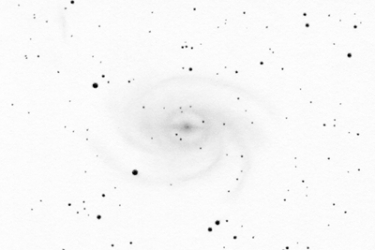
Pavo galaxy
The grand spiral galasy of Pavo
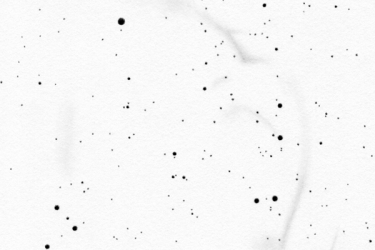
Panorama drawing
Huge and faint supernova remnant in the southern sky
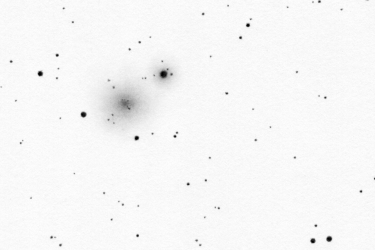
Centaurus globular cluster
The second globular in Centaurus

Apus globular cluster
Globular cluster close to the Southern celestial pole
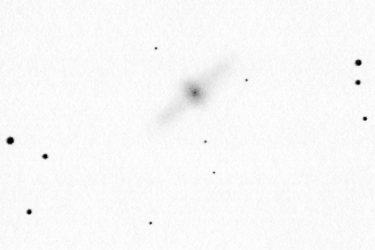
Centaurus galaxy
Polar ring galaxy
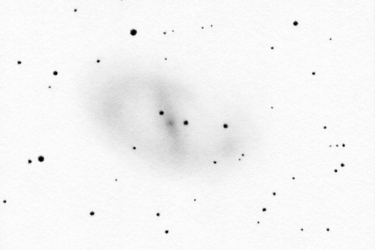
Ara galaxy
Barred spiral galaxy in the thick of the Milky Way